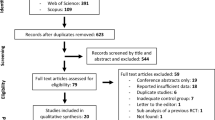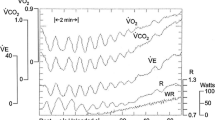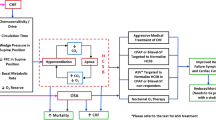Abstract
Introduction
The SERVE-HF trial included patients with heart failure and reduced ejection fraction (HFrEF) with sleep-disordered breathing, randomly assigned to treatment with Adaptive-Servo Ventilation (ASV) or control. The primary outcome was the first event of death from any cause, lifesaving cardiovascular intervention, or unplanned hospitalization for worsening heart failure. A subgroup analysis of the SERVE-HF trial suggested that patients with Cheyne-Stokes respiration (CSR) < 20% (low CSR) experienced a beneficial effect from ASV, whereas in patients with CSR ≥ 20% ASV might have been harmful. Identifying the proteomic signatures and the underlying mechanistic pathways expressed in patients with CSR could help generating hypothesis for future research.
Methods
Using a large set of circulating protein-biomarkers (n = 276, available in 749 patients; 57% of the SERVE-HF population) we sought to investigate the proteins associated with CSR and to study the underlying mechanisms that these circulating proteins might represent.
Results
The mean age was 69 ± 10 years and > 90% were male. Patients with CSR < 20% (n = 139) had less apnoea-hypopnea index (AHI) events per hour and less oxygen desaturation. Patients with CSR < 20% might have experienced a beneficial effect of ASV treatment (primary outcome HR [95% CI] = 0.55 [0.34–0.88]; p = 0.012), whereas those with CSR ≥ 20% might have experienced a detrimental effect of ASV treatment (primary outcome HR [95% CI] = 1.39 [1.09–1.76]; p = 0.008); p for interaction = 0.001. Of the 276 studied biomarkers, 8 were associated with CSR (after adjustment and with a FDR1%-corrected p value). For example, higher PAR-1 and ITGB2 levels were associated with higher odds of having CSR < 20%, whereas higher LOX-1 levels were associated with higher odds of CSR ≥ 20%. Signalling, metabolic, haemostatic and immunologic pathways underlie the expression of these biomarkers.
Conclusion
We identified proteomic signatures that may represent underlying mechanistic pathways associated with patterns of CSR in HFrEF. These hypothesis-generating findings require further investigation towards better understanding of CSR in HFrEF.
Graphic abstract
Summary of the findings. PAR-1 proteinase-activated receptor 1, ADM adrenomedullin, HSP-27 heat shock protein-27, ITGB2 integrin beta 2, GLO1 glyoxalase 1, ENRAGE/S100A12 S100 calcium-binding protein A12, LOX-1 lectin-like LDL receptor 1, ADAM-TS13 disintegrin and metalloproteinase with a thrombospondin type 1 motif, member13 also known as von Willebrand factor-cleaving protease.




Similar content being viewed by others
References
Cowie MR, Woehrle H, Wegscheider K, Angermann C, d’Ortho MP, Erdmann E, Levy P, Simonds AK, Somers VK, Zannad F, Teschler H (2015) Adaptive servo-ventilation for central sleep apnea in systolic heart failure. N Engl J Med 373(12):1095–1105
Magalang UJ, Pack AI (2015) Heart failure and sleep-disordered breathing—the plot thickens. N Engl J Med 373(12):1166–1167
Eulenburg C, Wegscheider K, Woehrle H, Angermann C, d’Ortho MP, Erdmann E, Levy P, Simonds AK, Somers VK, Zannad F, Teschler H, Cowie MR (2016) Mechanisms underlying increased mortality risk in patients with heart failure and reduced ejection fraction randomly assigned to adaptive servoventilation in the SERVE-HF study: results of a secondary multistate modelling analysis. Lancet Respir Med 4(11):873–881
Suhas SR, Vijendra S, Burk JR, Lucas EA, Behbehani K (2006) Classification of Cheyne-Stokes breathing and obstructive sleep apnea using ECG. Conf Proc IEEE Eng Med Biol Soc 1:3561–3564
Cowie MR, Woehrle H, Wegscheider K, Angermann C, d’Ortho MP, Erdmann E, Levy P, Simonds A, Somers VK, Zannad F, Teschler H (2013) Rationale and design of the SERVE-HF study: treatment of sleep-disordered breathing with predominant central sleep apnoea with adaptive servo-ventilation in patients with chronic heart failure. Eur J Heart Fail 15(8):937–943
Lundberg M, Eriksson A, Tran B, Assarsson E, Fredriksson S (2011) Homogeneous antibody-based proximity extension assays provide sensitive and specific detection of low-abundant proteins in human blood. Nucleic Acids Res 39(15):e102
Green GH, Diggle PJ (2007) On the operational characteristics of the Benjamini and Hochberg False Discovery Rate procedure. Stat Appl Genet Mol Biol 6:27
UniProt (2017) The universal protein knowledgebase. Nucleic Acids Res 45(D1):D158–D169
Fabregat A, Jupe S, Matthews L, Sidiropoulos K, Gillespie M, Garapati P, Haw R, Jassal B, Korninger F, May B, Milacic M, Roca CD, Rothfels K, Sevilla C, Shamovsky V, Shorser S, Varusai T, Viteri G, Weiser J, Wu G, Stein L, Hermjakob H, D’Eustachio P (2018) The reactome pathway knowledgebase. Nucleic Acids Res 46(D1):D649–D655
Szklarczyk D, Franceschini A, Wyder S, Forslund K, Heller D, Huerta-Cepas J, Simonovic M, Roth A, Santos A, Tsafou KP, Kuhn M, Bork P, Jensen LJ, von Mering C (2015) STRING v10: protein-protein interaction networks, integrated over the tree of life. Nucleic Acids Res 43:D447–D452
Slenter DN, Kutmon M, Hanspers K, Riutta A, Windsor J, Nunes N, Melius J, Cirillo E, Coort SL, Digles D, Ehrhart F, Giesbertz P, Kalafati M, Martens M, Miller R, Nishida K, Rieswijk L, Waagmeester A, Eijssen LMT, Evelo CT, Pico AR, Willighagen EL (2018) WikiPathways: a multifaceted pathway database bridging metabolomics to other omics research. Nucleic Acids Res 46(D1):D661–D667
Calderone A, Castagnoli L, Cesareni G (2013) mentha: a resource for browsing integrated protein-interaction networks. Nat Methods, United States 10:690–691
Chatr-Aryamontri A, Oughtred R, Boucher L, Rust J, Chang C, Kolas NK, O’Donnell L, Oster S, Theesfeld C, Sellam A, Stark C, Breitkreutz BJ, Dolinski K, Tyers M (2017) The BioGRID interaction database: 2017 update. Nucleic Acids Res 45(D1):D369–D379
Malfertheiner MV, Lerzer C, Kolb L, Heider K, Zeman F, Gfullner F, Maier LS, Pfeifer M, Arzt M (2017) Whom are we treating with adaptive servo-ventilation? A clinical post hoc analysis. Clin Res Cardiol 106(9):702–710
Yumino D, Bradley TD (2008) Central sleep apnea and Cheyne-Stokes respiration. Proc Am Thorac Soc 5(2):226–236
Naughton MT (2012) Cheyne-Stokes respiration: friend or foe? Thorax 67(4):357–360
Oldenburg O, Wellmann B, Bitter T, Fox H, Buchholz A, Freiwald E, Horstkotte D, Wegscheider K (2018) Adaptive servo-ventilation to treat central sleep apnea in heart failure with reduced ejection fraction: the Bad Oeynhausen prospective ASV registry. Clin Res Cardiol 107(8):719–728
Sin DD, Fitzgerald F, Parker JD, Newton G, Floras JS, Bradley TD (1999) Risk factors for central and obstructive sleep apnea in 450 men and women with congestive heart failure. Am J Respir Crit Care Med 160(4):1101–1106
Arzt M, Oldenburg O, Graml A, Erdmann E, Teschler H, Wegscheider K, Suling A, Woehrle H (2017) Phenotyping of sleep-disordered breathing in patients with chronic heart failure with reduced ejection fraction-the SchlaHF registry. J Am Heart Assoc. https://doi.org/10.1161/JAHA.116.005899
Pawlinski R, Tencati M, Hampton CR, Shishido T, Bullard TA, Casey LM, Andrade-Gordon P, Kotzsch M, Spring D, Luther T, Abe J, Pohlman TH, Verrier ED, Blaxall BC, Mackman N (2007) Protease-activated receptor-1 contributes to cardiac remodeling and hypertrophy. Circulation 116(20):2298–2306
Leger AJ, Covic L, Kuliopulos A (2006) Protease-activated receptors in cardiovascular diseases. Circulation 114(10):1070–1077
Tromp J, Westenbrink BD, Ouwerkerk W, van Veldhuisen DJ, Samani NJ, Ponikowski P, Metra M, Anker SD, Cleland JG, Dickstein K, Filippatos G, van der Harst P, Lang CC, Ng LL, Zannad F, Zwinderman AH, Hillege HL, van der Meer P, Voors AA (2018) Identifying pathophysiological mechanisms in heart failure with reduced versus preserved ejection fraction. J Am Coll Cardiol 72(10):1081–1090
Yuyun MF, Narayan HK, Ng LL (2015) Prognostic significance of adrenomedullin in patients with heart failure and with myocardial infarction. Am J Cardiol 115(7):986–991
Liu S, Iskandar R, Chen W, Zhang J, Wang Y, Chen X, Xiang F (2016) Soluble glycoprotein 130 and heat shock protein 27 as novel candidate biomarkers of chronic heart failure with preserved ejection fraction. Heart Lung Circ 25(10):1000–1006
Akinnusi ME, Laporta R, El-Solh AA (2011) Lectin-like oxidized low-density lipoprotein receptor-1 modulates endothelial apoptosis in obstructive sleep apnea. Chest 140(6):1503–1510
Pothineni NVK, Karathanasis SK, Ding Z, Arulandu A, Varughese KI, Mehta JL (2017) LOX-1 in atherosclerosis and myocardial ischemia: biology, genetics, and modulation. J Am Coll Cardiol 69(22):2759–2768
Ligthart S, Sedaghat S, Ikram MA, Hofman A, Franco OH, Dehghan A (2014) EN-RAGE: a novel inflammatory marker for incident coronary heart disease. Arterioscler Thromb Vasc Biol 34(12):2695–2699
Brouwers O, Niessen PM, Ferreira I, Miyata T, Scheffer PG, Teerlink T, Schrauwen P, Brownlee M, Stehouwer CD, Schalkwijk CG (2011) Overexpression of glyoxalase-I reduces hyperglycemia-induced levels of advanced glycation end products and oxidative stress in diabetic rats. J Biol Chem 286(2):1374–1380
Akyol O, Akyol S, Chen CH (2016) Update on ADAMTS13 and VWF in cardiovascular and hematological disorders. Clin Chim Acta 463:109–118
Ferreira JP, Pizard A, Machu JL, Bresso E, Rocca HB, Girerd N, Leroy C, Gonzalez A, Diez J, Heymans S, Devignes MD, Rossignol P, Zannad F (2019) Plasma protein biomarkers and their association with mutually exclusive cardiovascular phenotypes: the FIBRO-TARGETS case-control analyses. Clin Res Cardiol. https://doi.org/10.1007/s00392-019-01480-4
Adams JC, Tucker RP (2000) The thrombospondin type 1 repeat (TSR) superfamily: diverse proteins with related roles in neuronal development. Dev Dyn 218(2):280–299
Acknowledgements
JPF, PR, FZ are supported by a public grant overseen by the French National Research Agency (ANR) as part of the second “Investissements d’Avenir” program FIGHT-HF (reference: ANR-15-RHU-0004) and by the French PIA project “Lorraine Université d’Excellence”, reference ANR-15-IDEX-04-LUE. And by Contrat de Plan Etat-Lorraine and FEDER Lorraine.
Author information
Authors and Affiliations
Corresponding author
Ethics declarations
Conflict of interest
All authors declare that they have no conflict of interest.
Electronic supplementary material
Below is the link to the electronic supplementary material.
Rights and permissions
About this article
Cite this article
Ferreira, J.P., Duarte, K., Woehrle, H. et al. Bioprofiles and mechanistic pathways associated with Cheyne-Stokes respiration: insights from the SERVE-HF trial. Clin Res Cardiol 109, 881–891 (2020). https://doi.org/10.1007/s00392-019-01578-9
Received:
Accepted:
Published:
Issue Date:
DOI: https://doi.org/10.1007/s00392-019-01578-9




